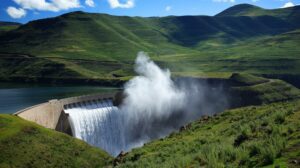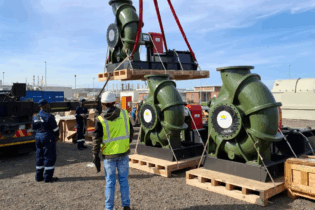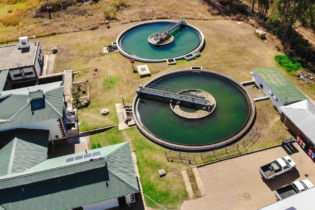The average water consumption in South Africa is 237 litres per person per day comparing poorly with the global average of approximately 173 litres.
By Heman Kassan, Chief Commercial Officer of Technodyn International In a country that has been experiencing significant water shortages since 2015, more must be done to optimise the operational environment. This sees the likes of automation and big data giving impetus to transforming the utilities space. The digital transformation in water and wastewater ecosystem requires optimising assets, effectively managing the workforce, and delivering customer service while achieving sustainability goals. Providers must be able to use an integrated solution for the selection, renewal, monitoring, and maintenance of supply and distribution assets. The availability of more advanced technologies makes this possible. For their part, utilities must also evolve to embrace these innovations and replace ageing infrastructure with newer technology that can increase efficiencies and lessen the impact on the environment while saving valuable resources. With above-normal rainfall expected countrywide during late spring, now is the best time to ensure the water being captured is optimised within the constraints of the physical infrastructure being used. Field service a winning start Field service technicians are also important in this regard. They depend heavily on deployed technologies to not only engage with customers but also improve first-time fix rates by having a better understanding of the potential problem. Access to interactive tools like augmented reality (AR), scheduling solutions, and routing tools can dramatically improve field service outcomes. It can also contribute to better utilisation of scarce water resources as utilities can better manage their workers in the field and optimise scheduling to reduce wastage during infrastructure problems. However, interactive tools can include any technology resources that allow users to better communicate with other people or streamline field service processes. Think integrated solutions like dispatching tools, digital work order management solutions, and enterprise management platforms. Tooling for successHelping drive the adoption of more sophisticated technologies at utilities is the need to enhance the organisational capacity to deliver remote assistance. This has become exceedingly important in field service settings. Technicians able to interact with other field service experts while working in the field can greatly improve successful outcomes when doing maintenance or even conducting fault-finding exercises. It also means that utilities can increase employment opportunities for novice field service technicians who can then more easily have access to an expert to guide them remotely while on a dispatch.
From a customer perspective, remote assistance can also be invaluable. Access to mobile apps and online dashboards can result in customers engaging directly with field service technicians to either receive guidance on identifying and fixing minor issues or alert them to major infrastructure failures. Even for South African utilities, the traditional break and fix model of service is showing signs of becoming obsolete. More service providers are relying on things like remote service, self-service, predictive maintenance, and digital collaboration to serve customers and reduce water resource wastage. Moreover, field service specialists are identifying gaps in the way their teams operate. Modern technologies mean they can now do more with less – something that has become imperative when budgets and human resources are limited. Managing risks Invariably, reactive scenarios are a daily reality in utilities. This means limited resources must be applied strategically while still prioritising worker safety. Considerations need to include ageing equipment, responding to problems in remote areas at night, lone-worker situations, hazardous activities, and safety from being attacked by disgruntled community members. Only once these elements are assessed, can field service technicians receive approval to attend to problems. Being able to access mobile workforce management solutions that feature advanced workforce planning and scheduling optimisation systems such as those available from software companies like IFS, becomes a crucial enabler in this regard. These systems provide decision-makers with an integrated, real-time view of the operation. With this in place, planners, schedulers, and dispatchers can explore various scenarios before identifying the safest, most cost-efficient, and effective plan of action when attending to infrastructure and other issues. Better infrastructure support Fundamentally, utilities infrastructure must be transformed from the ground up. But with limited budget available, and time pressures from an expectant citizenry, the focus must be on improving internal efficiencies. Additionally, the better management of critical assets, optimising field workforces, and conducting business operations quickly and accurately are now non-negotiable. Throughout this, technology plays an important role. Once modern infrastructure is in place to manage assets, field service activities, and resource planning, improved productivity and reduced wastage will follow. The savings generated from this can then be directed to large infrastructure projects. It eventually becomes a self-fulfilling prophecy, but it requires institutional change and embracing technology to initiate.







